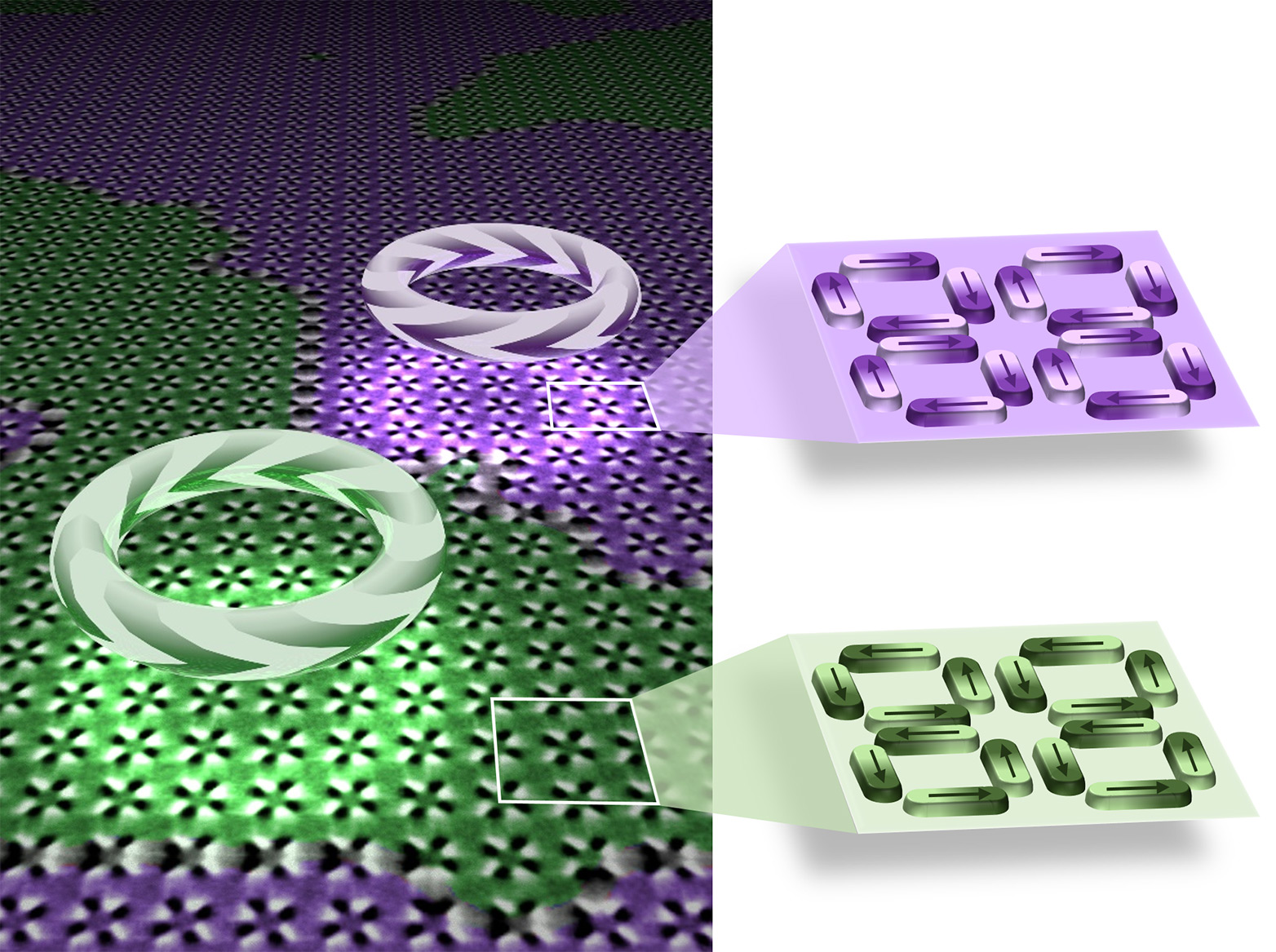Swirling Magnetic Order in Artificial Crystals
In a collaboration between the Laboratory for Multifunctional Ferroic Materials (Manfred Fiebig, ETH Zurich) the Laboratory for Mesoscopic Systems (Laura Heyderman, ETH Zurich, PSI) and the Condensed Matter Theory Group (Peter Derlet, PSI), an exotic new type of magnetic order has been designed and controlled.

In the formation of ice flowers on windows in cold winter nights, nature impressively displays its tendency to spontaneously order in well-defined symmetric configurations. Another example of an ordered state in nature that is of tremendous importance in daily life is the parallel alignment of atomic-scale magnetic compass needles (called spins) in materials like iron. The resulting magnetization and magnetic field are the basis of digital memory, power generation, electromotors, sensors, and much more. While ferromagnetic materials such as iron are well known, there are many other types of magnetic order that are not so familiar to the general public. For example, there are magnets that, despite their order, do not exhibit any magnetic field and therefore will not stick to a fridge door like ferromagnets. The spins in these exotic magnets are arranged in such way that the sum of the individual fields vanishes, which is referred to as a compensated magnetic state. At first glance, this may appear to be useless for the applications mentioned above since they all require a magnetic field to work. However, there are important benefits to magnets with "magnetization-less" order. One of them is that a data bit stored in such a compensated magnetic state cannot be accidentally erased by magnetic fields. Another advantage of these materials is that they allow faster communication with the data bits and therefore could be used in the future to build faster computer memories.
In an ETH/PSI collaboration, PhD students Jannis Lehmann and Claire Donnelly manufactured a material displaying a special magnetic order, which had no magnetic field. In this material, the atomic-scale magnetic compass needles are replaced by nanoscale magnets for which the moments are arranged head to tail in little circles so that they form a magnetic swirl. The individual swirls are repeated regularly across the sample to form an exotic ordered-magnetic state (see image), referred to as "ferrotoroidic". The ETH/PSI team showed that such an artificial material can have extended regions in which the circulation of the magnetic swirls is uniformly oriented clockwise or counterclockwise. Most of all, they showed that the circulation can be set to clockwise or counterclockwise using a nanoscale magnetic pen. Such a writing process is similar to the way in which magnetic data is recorded in a ferromagnetic computer hard disk. However, in contrast to data storage in ferromagnets, the reading and writing in ferrotoroidic materials works despite the absence of a net magnetic field.
One of the key ideas of these experiments was to use an artificial crystal instead of conventional materials where the atomic-scale spins are far too small to be conveniently observed and manipulated. Instead, the ETH/PSI team manufactured a metamaterial made up from small magnetic bars arranged in squares on the surface of a silicon plate (see image). The size of the bars is about 1000 times larger than that of an atomic-scale spin. Because of this upscaling, the ferrotoroidic order can be observed with conventional scanning probe microscopy methods and manipulated with a magnetic tip acting as a nanoscale writing pen.
You can read about the scientific background of these experiments in the present issue of Nature Nanotechnology at external pagehttps://www.nature.com/articles/s41565-018-0321-xcall_made.
Jannis Lehmann, Claire Donnelly, Peter M. Derlet, Laura J. Heyderman, Manfred Fiebig: Poling of an artificial magneto-toroidal crystal, Nature Nanotechnology (2018), external pageDOI:10.1038/s41565-018-0321-xcall_made
